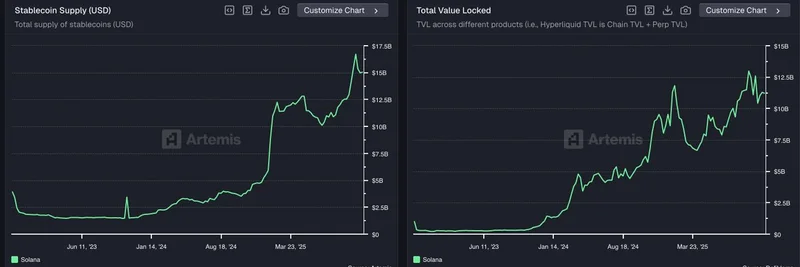In the ever-evolving world of blockchain, Ethereum continues to host some of the most influential projects in crypto. A recent tweet from Token Terminal highlights an intriguing fact: the top three businesses on Ethereum—Tether, Aave, and Circle—all operate under different organizational structures. This diversity underscores a key message: building solid products often trumps experimenting with governance innovations.
The chart shared in the tweet tracks Total Value Locked (TVL), which essentially measures the total amount of assets deposited or locked into these protocols on the Ethereum network. For stablecoins like Tether (USDT) and Circle's USDC, this often reflects user deposits or circulating supply on chain. It's a key metric for gauging a project's scale and adoption in the DeFi (Decentralized Finance) space.
Breaking Down the Leaders
Let's dive into each of these powerhouses and what makes their structures unique.
Tether: The Private Company Powerhouse
Tether, issuer of the world's most popular stablecoin USDT, operates as a private company under Tether Holdings Limited. Pegged 1:1 to the US dollar, USDT provides stability in the volatile crypto markets, making it a go-to for traders and liquidity providers. Despite controversies around reserves in the past, Tether has grown massively, with its TVL on Ethereum soaring past $100 billion in recent years, as shown in the chart's green line. This private structure allows for quick decision-making but relies heavily on trust in the company's transparency.
In the meme token ecosystem, USDT is indispensable. Whether you're swapping into the latest Solana-based meme coin or hedging against market dips, Tether's liquidity fuels countless trades on decentralized exchanges.
Aave: DAO-Driven Decentralized Lending
Aave stands out as a Decentralized Autonomous Organization (DAO), where governance is handled by token holders voting on proposals. As a leading lending protocol, Aave lets users borrow and lend crypto assets without intermediaries, earning interest or using flash loans for advanced strategies. Its TVL, represented by the blue line, has seen steady growth, reflecting strong community adoption.
DAOs like Aave embody the ethos of blockchain—decentralized control and community involvement. This model fosters innovation but can sometimes lead to slower decisions compared to centralized entities. For meme enthusiasts, Aave is a tool for leveraging positions: borrow stablecoins to buy more of that hot dog-themed token, amplifying potential gains (and risks).
Circle: The Publicly Listed Innovator
Circle, behind the USDC stablecoin, has taken the traditional route by becoming a publicly listed company. This structure brings regulatory compliance and investor scrutiny, which can enhance credibility in mainstream finance. USDC is designed for stability and transparency, with regular audits backing its dollar peg. The orange line on the chart shows Circle's TVL climbing, especially post-2022, as it competes head-on with Tether.
Public listing opens doors to institutional money, potentially bridging crypto with traditional markets. In meme trading, USDC offers a compliant alternative to USDT, often preferred on platforms integrating with fiat systems.
Why This Diversity Matters in Blockchain
The tweet's punchline—"Products > Governance innovations"—rings true. While governance models like DAOs spark excitement, the success of these projects hinges on delivering reliable, user-friendly products. Ethereum's ecosystem thrives on this mix: private efficiency, DAO democracy, and public accountability.
For blockchain practitioners and meme token hunters alike, understanding these structures helps navigate the space. Stablecoins from Tether and Circle provide the on-ramps for meme liquidity pools, while Aave's lending features enable creative strategies. As Ethereum evolves with upgrades like layer-2 scaling, these leaders will likely continue dominating TVL charts.
If you're building or trading in the meme world, keep an eye on how these giants adapt. Their organizational diversity not only drives competition but also inspires new ways to structure crypto projects. Stay tuned to Meme Insider for more insights into blockchain trends and meme token knowledge.



